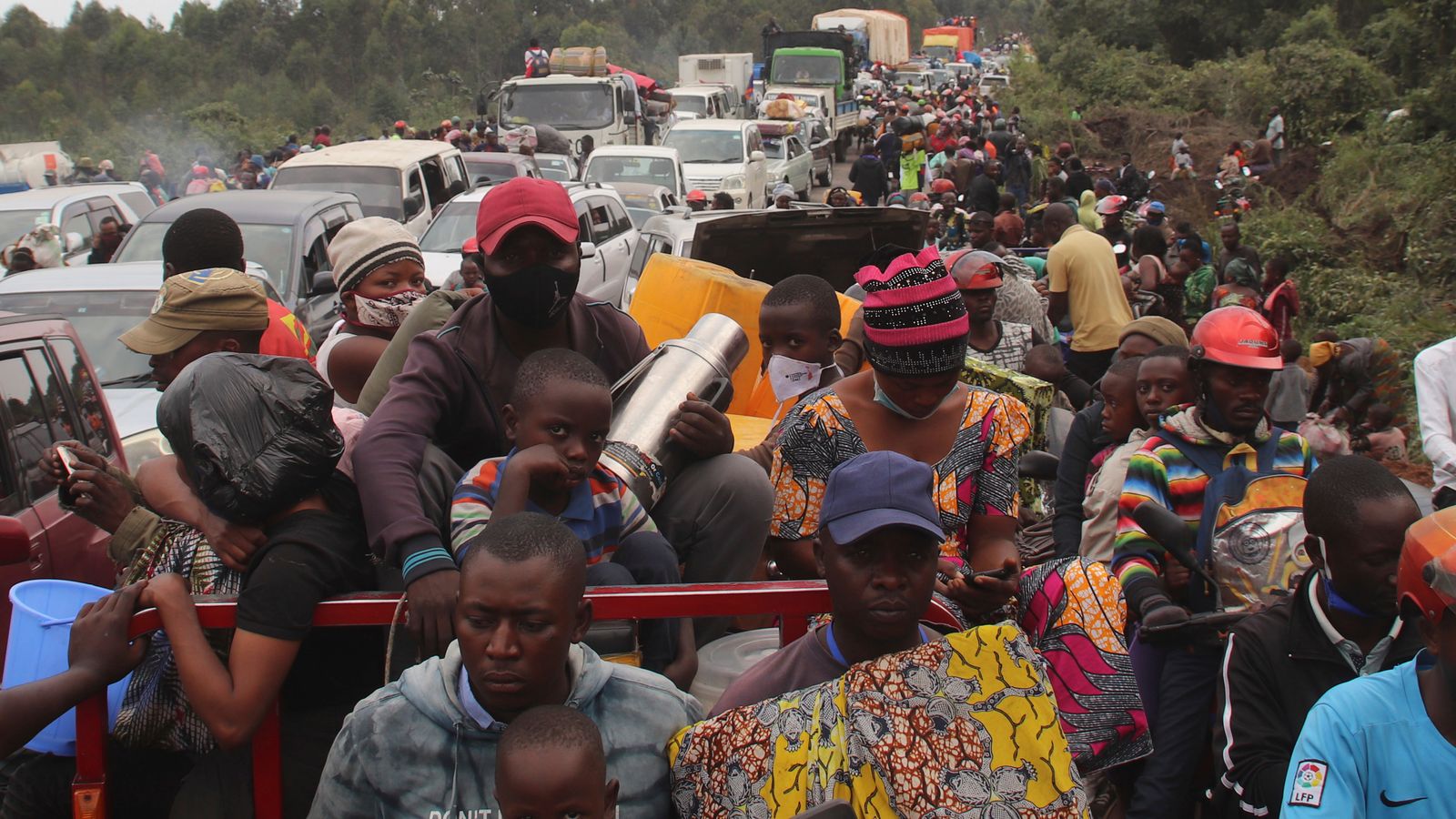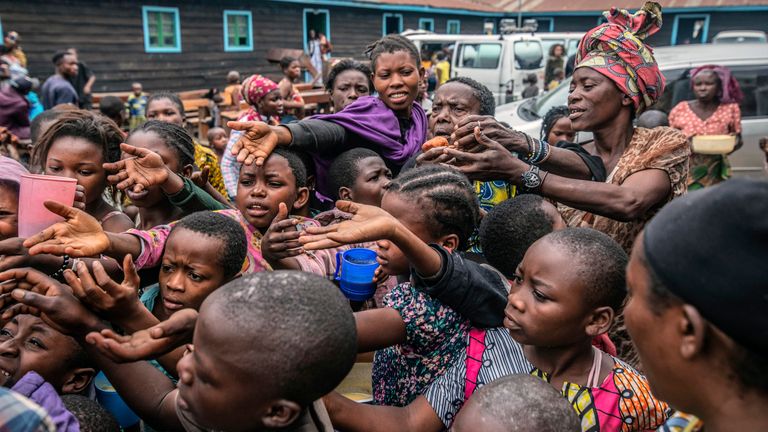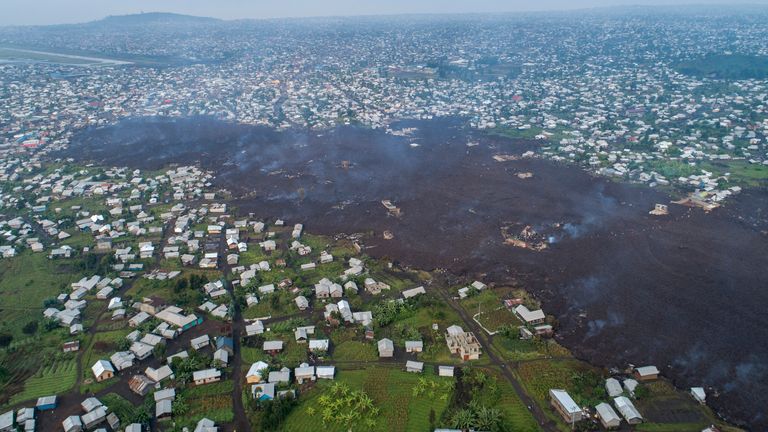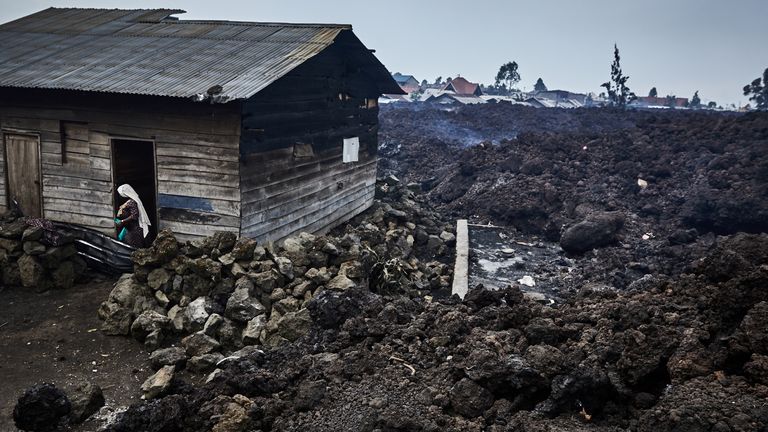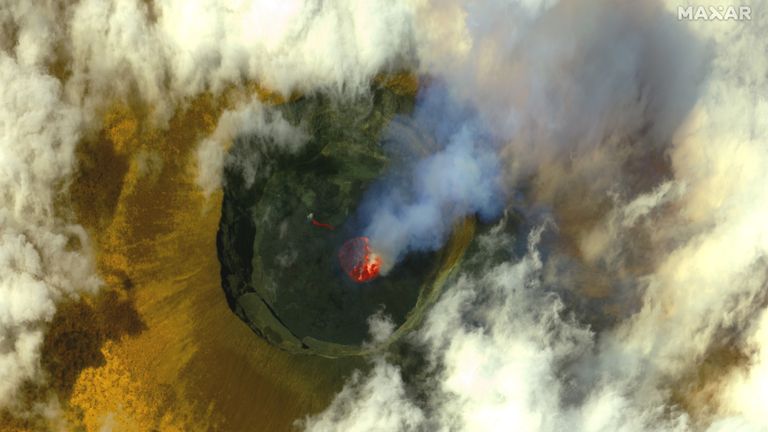Tens of thousands of people have fled their homes in the Democratic Republic of Congo over warnings that a volcano could erupt again – with some families struggling to find enough food and water.
At least 31 people died when Mount Nyiragongo sent a wall of lava spreading towards the city of Goma last Saturday, destroying 3,000 homes and cutting off a major road used to bring aid to the region.
The lava stopped just short of the city limits, but a mass evacuation began again on Thursday when the government warned that the volcano, one of the world’s most active, could erupt again.
Many of those fleeing escaped to Sake, a town 13 miles northwest of Goma, which is prone to cholera outbreaks, UNICEF said.
The charity warned of a potential “catastrophe” and said around 400,000 people need support or protection.
Edouard Beigbeder, UNICEF’s representative in DR Congo, said: “With an increased risk of a cholera outbreak, we are appealing for urgent international assistance to avert what could be a catastrophe for children.”
Kabuo Asifiwe Muliwavyo, 36, said she and her seven children had not eaten since arriving in Sake on Thursday.
Cradling her crying one-year-old child, she told Reuters: “They told us that there will be a second eruption and that there will be a big gas explosion. But since we moved, there is nothing here… We are starving.”
Danga Tungulo, who slept next a road in Sake with his four children, said they had not eaten since they left Goma the previous day.
Hassan Kanga, a lawyer who fled after the eruption, said: “They told everyone that assistance would be organised, that money would be disbursed by the government. And yet, you find us under the stars.”
The evacuation order was issued at around 1am local time on Thursday after radar images showed molten rock flowing under Goma.
The movement of magma caused cracks in the ground and hundreds of earthquakes, which could allow it to burst through to the surface in a fresh eruption, the Goma Volcano Observatory (OVG) said.
The frequency and intensity of the ground tremors had lessened in the last 24 hours, suggesting the risk of a fresh eruption was subsiding, a OVG spokesman said on Friday.
He added: “I don’t think we will have a second eruption. The problem is the risk of fractures, but the risk is small, around 20%.”
Some people who fled to Sake crowded into trucks later on Friday to return to Goma, while dozens of people who had travelled in the opposite direction to neighbouring Rwanda also crossed back into Congo.
Mount Nyiragongo previously erupted in 2002, leaving hundreds of people dead and more than 100,000 homeless.
The volcano also erupted in 1977, killing more than 600 people.
